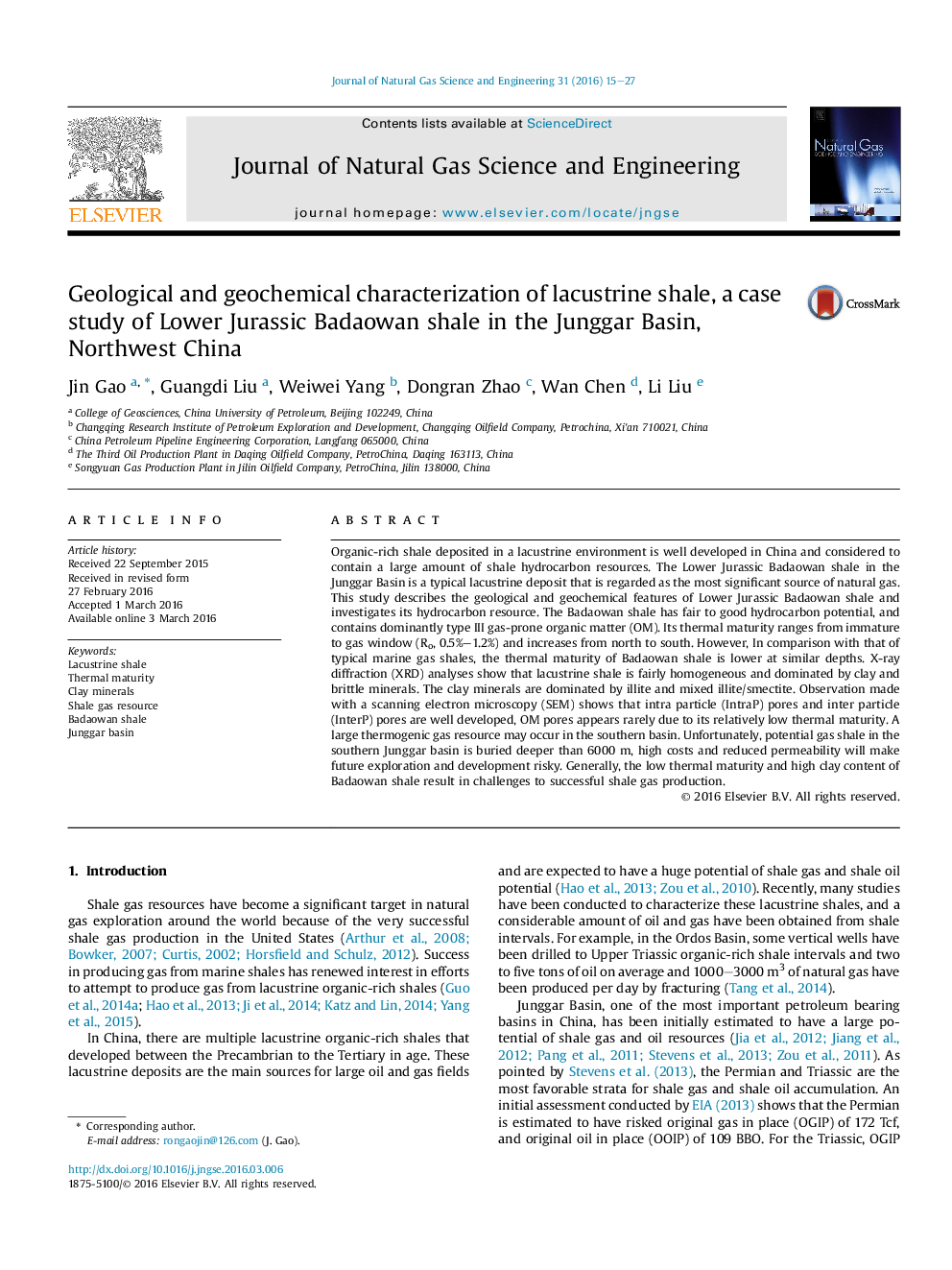| Article ID | Journal | Published Year | Pages | File Type |
|---|---|---|---|---|
| 8128848 | Journal of Natural Gas Science and Engineering | 2016 | 13 Pages |
Abstract
Organic-rich shale deposited in a lacustrine environment is well developed in China and considered to contain a large amount of shale hydrocarbon resources. The Lower Jurassic Badaowan shale in the Junggar Basin is a typical lacustrine deposit that is regarded as the most significant source of natural gas. This study describes the geological and geochemical features of Lower Jurassic Badaowan shale and investigates its hydrocarbon resource. The Badaowan shale has fair to good hydrocarbon potential, and contains dominantly type III gas-prone organic matter (OM). Its thermal maturity ranges from immature to gas window (Ro, 0.5%-1.2%) and increases from north to south. However, In comparison with that of typical marine gas shales, the thermal maturity of Badaowan shale is lower at similar depths. X-ray diffraction (XRD) analyses show that lacustrine shale is fairly homogeneous and dominated by clay and brittle minerals. The clay minerals are dominated by illite and mixed illite/smectite. Observation made with a scanning electron microscopy (SEM) shows that intra particle (IntraP) pores and inter particle (InterP) pores are well developed, OM pores appears rarely due to its relatively low thermal maturity. A large thermogenic gas resource may occur in the southern basin. Unfortunately, potential gas shale in the southern Junggar basin is buried deeper than 6000Â m, high costs and reduced permeability will make future exploration and development risky. Generally, the low thermal maturity and high clay content of Badaowan shale result in challenges to successful shale gas production.
Related Topics
Physical Sciences and Engineering
Earth and Planetary Sciences
Earth and Planetary Sciences (General)
Authors
Jin Gao, Guangdi Liu, Weiwei Yang, Dongran Zhao, Wan Chen, Li Liu,
